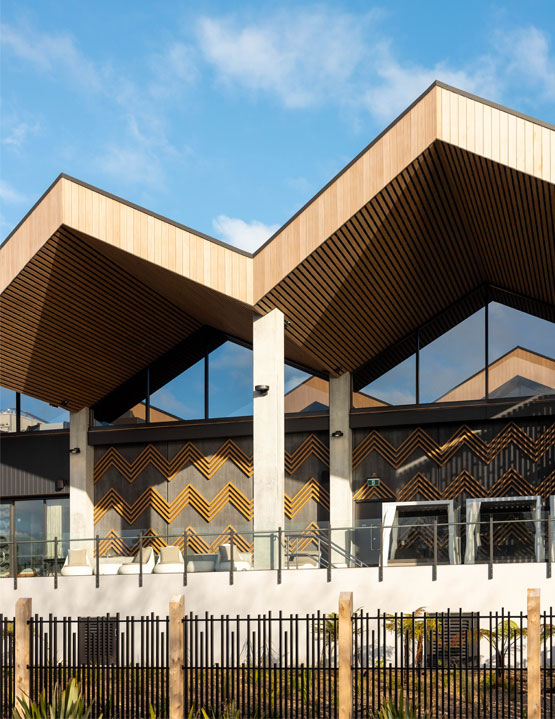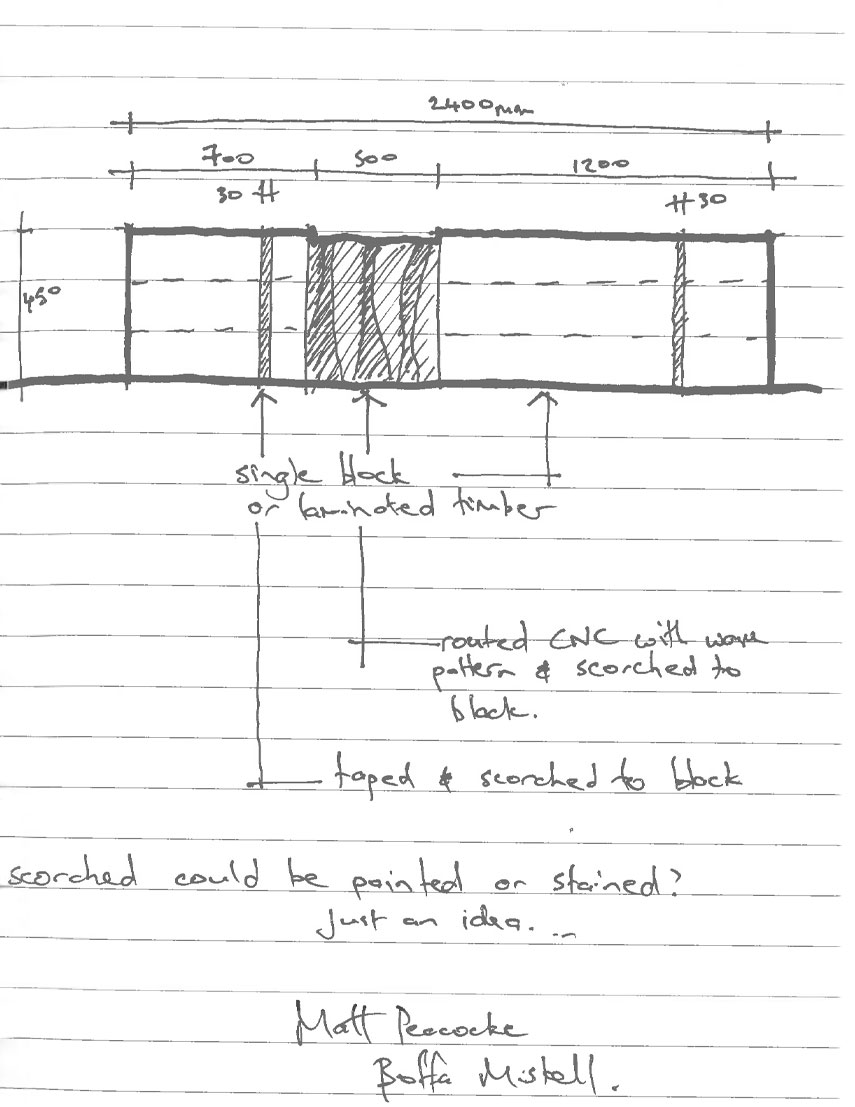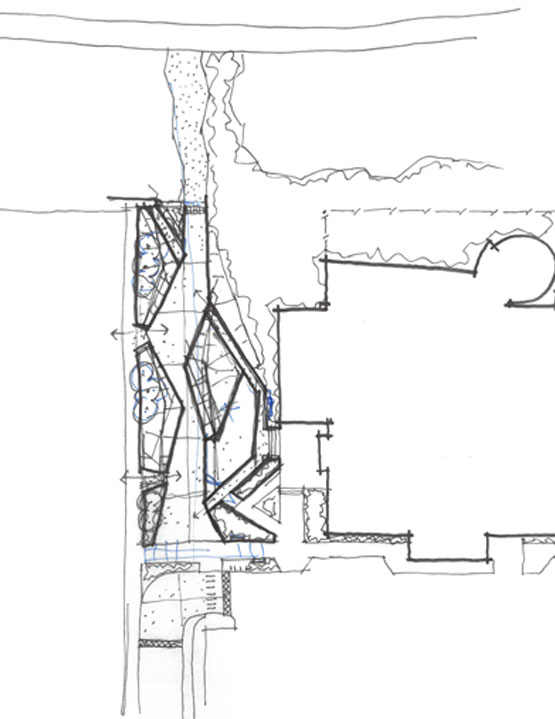Wai Ariki Lakefront Spa – Landscape Statement
The strategy for the landscape design, both within and outside of the building footprint, has been to create a restful and relaxing environment for all users of the space based upon six cultural values of design. The landscape provides a strong structure for the building, anchoring it into the local vernacular and context of Lake Rotorua.
The landscape design takes the form of predominantly soft planted spaces, each with a tangible link to both the building activities taking place adjacent, and the local culture and ecology. The landscape framework for the site includes the following spaces:
Car Park
A large car parking area to the south of the building provides ample space for visitor parking, both in cars and coaches. Drop off and pick up spaces have been demarcated along the building frontage, and crosswalks ensure traffic speeds are kept low. The car parking bays are interspersed with tree planting, of which the canopies provide colour, and shade in the summer. Pathways are lined with tree planting, and information signage located adjacent to the car parks and coach parking welcomes visitors to the Wai Ariki Lakeside Spa.
Lakefront Interface
The northern façade of the building faces out towards Lake Rotorua. The foreground is inhabited by a green reserve, including the lakeside walk, canoe launching, mature trees and rich planting. A 1.8m high security fence, designed as a contemporary bespoke element has been designed with inspiration from the traditional Maaori palisade pa fence whilst taking cues of influence from the architectural features of the building. A buffer of native planting is proposed, incorporating a native planted swale for stormwater, increasing biodiversity, providing habitat for local flora and fauna, and continuing the native planted theme used around the building, blending it into the lakefront landscape. Proposed trees buffer views from the lakeside pathway towards the building, whilst still allowing visitors to the Thermal Spa unimpeded views over the Lake.
The lakeside area is to be designed in combination with the lakefront designers, isthmus.
Perimeter Planting
The building nestles into the context of Lake Rotorua and the township by a densely planted buffer at the base of the building. Native and endemic species flourish here which, in turn, enhance local biodiversity. The perimeter planting provides a preview of the planting types and species that are also found within the building, creating a sense of flexibility between indoor and outdoor spaces. Large Ponga trees characterise the perimeter planting areas, specifically the curvature of the built form, echoing their natural habitat of moving through valleys in Rotorua.
Building Frontage and Entry Zones
The southern façade of the building is grounded into the landscape with planting and social seating spaces, adjacent to the main entry of the building. Landscape materials are robust and easy to maintain, as well as being utilised to celebrate and recognise cultural and ecological elements. Within the ground plane a below-ground geothermal feature is celebrated using a surface material change (colour/texture) and a decorative etching or plaque within the ground highlights this unique feature. This also allows a flexible paving system whereby pavers can be removed and the geothermal vein can be accessed. Seating elements along the front of the building are large embossed timber beams designed to complement the architecture of the building, whilst touching upon the story of the geothermal activity of the site through abstract hints in colour and form. Tree planting along the frontage provides some height and a green canopy, welcoming visitors to the building entrance, and creating a soft green vista for when they leave.
Welcome Space
The western façade of the building is enhanced by a deep buffer of rich native planting. The circular geometry of the building is echoed by the placement of three low arching walls set within the planting. Within the planting also are placed the three cultural markers and these provide a backdrop for the perfect photo opportunity for visitors. The planting surrounds the western façade with large Ponga trees located at the base of the building, providing height and blurring the interface between the built form and the landscape. A further four cultural markers can be found as one moves towards the northern entry of the Spa. The planting flows from the building out towards the lakefront, settling into its context.
Internal Landscape
Within the building footprint are many opportunities for greening. Floor-to-ceiling glass windows within the centre of the building provides space for a pocket of Rotorua Forest. Visitors can enjoy native fern planting throughout the building located in pots and planters. The Herbal Pool space is home to a richly planted green wall and fragrant herb planting, whilst the Mud Experience rooms have views to native architectural plant and shrub species. These pockets of green space breathe life into the built form and engender an atmosphere of tranquillity and relaxation.




